Assessing the validity of item response theory models when calibrating field test items
Brandon LeBeau
University of Iowa
Validity for IRT Models
- Validity is important for any assessment and the argument should begin with psychometrics.
- How the psychometrics is performed directly impacts properties of the assessment that are assessed later for evidence of validity.
- Are scores reported below chance level?
- The validity of the psychometrics is particularly important for field test data.
IRT Model
Field Testing
- Field testing (FT) is essential to new assessment development or form building.
- A way to gather information to make informed decisions about which items become operational.
- Limitations:
- Many items are tried that do not become operational.
- This spreads a fixed pool of individuals (respondents) across many field test items.
- Ultimately, sample size can be significantly smaller compared to operational assessments.
- Issues with distractors.
- Many items are tried that do not become operational.
Threats to Validity in FT
- Generalizeability
- Is the FT sample representative of the desired population?
- Over-fitting with 3PL model?
- Uncertainty in estimates
- Sample size and lower asymptote estimation
- Interconnected parameter estimates
Generalizeability
- We assume respondents are randomly sampled from some population.
- Are item responses truly randomly sampled from the population of interest?
- Selection or Measurement bias
- If not, estimates are extremely sample dependent.
- Are item responses truly randomly sampled from the population of interest?
- 3PL model may provide better fit, but is this at the cost of overfitting?
- Fit should not be the only consideration when deciding on an IRT model for FT data.
Uncertainty
- Sample size (1000 commonly cited for 3PL model):
- Tends to be smaller in field test designs.
- Even with small samples, can achieve convergence with 3PL model with help of priors, ridge, etc.
- Are our estimates now biased?
- Estimating Lower Asymptote (pseudo-guessing):
- Difficulty in estimating this term ($c_{j}$) has direct impact on estimation of the other two terms.
- This leads to a cascading vortex of problems.
- The pseudo-guessing is commonly a nuisance parameter, why allow a nuisance parameter to drastically affect estimation of other terms?
- Difficulty in estimating this term ($c_{j}$) has direct impact on estimation of the other two terms.
Methodology
- Individual response strings were resampled in a two stage framework:
- First, individuals who took the field test were resampled with replacement within each field test booklet.
- Second, individuals who only took operational items were resampled with replacement to fill out the remaining observations.
- After resampling, items were calibrated with Bilog-MG.
- This process was replicated 5000 times to generate bootstrapped item parameters.
Example ICC Math FT Item 3PL
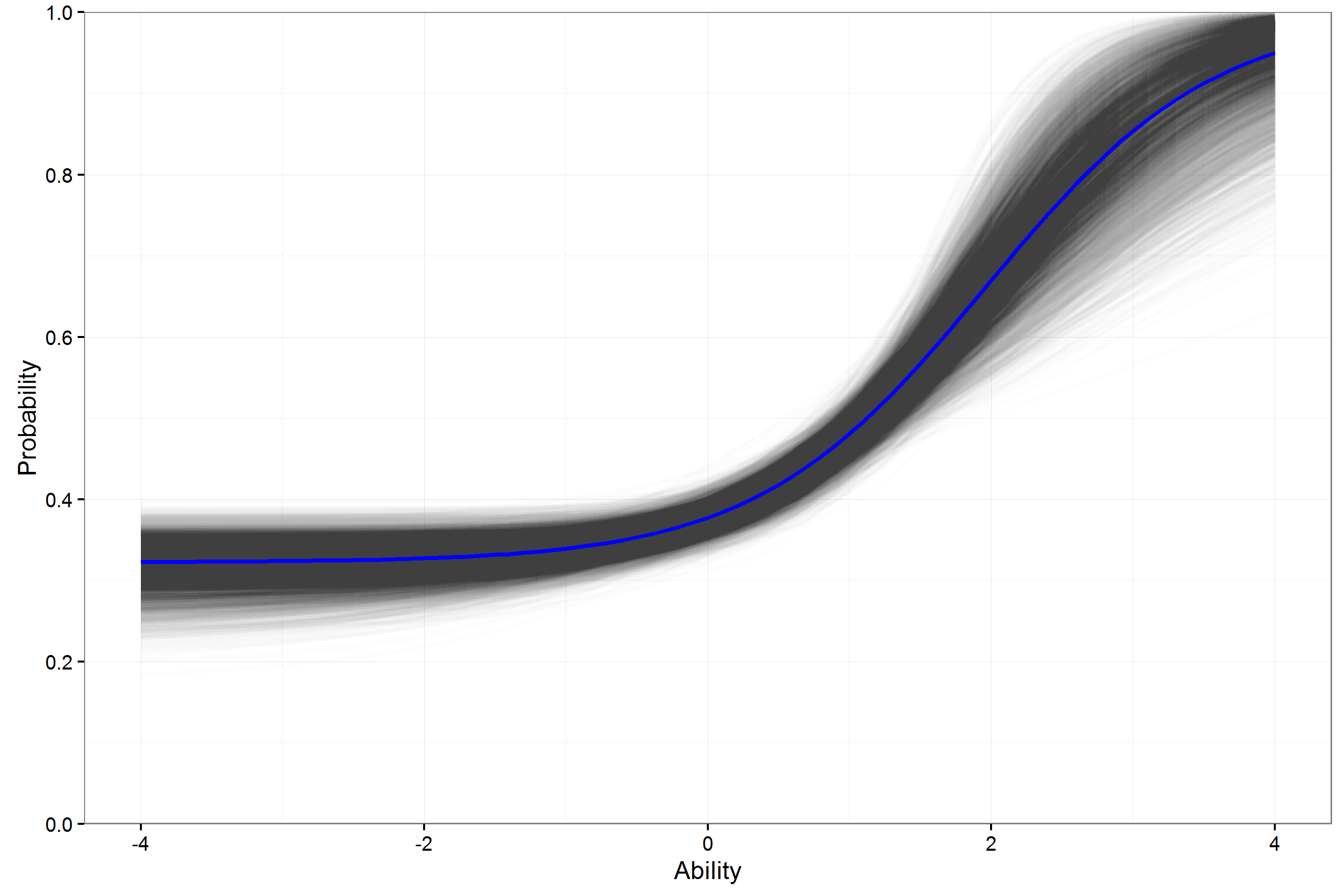
Example ICC Math FT Item 2PL

Example ICC ELA FT Item 3PL
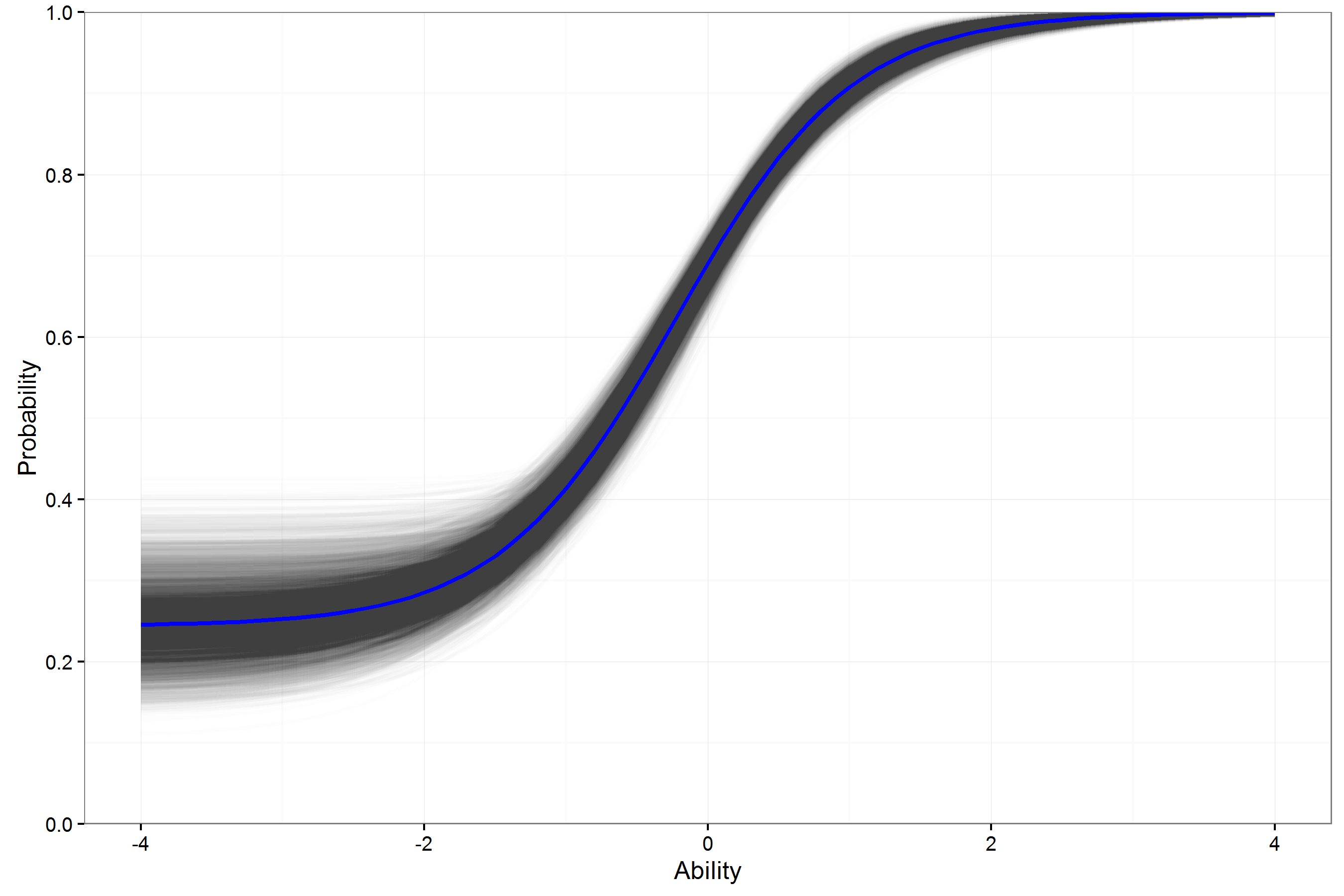
Example ICC ELA FT Item 2PL
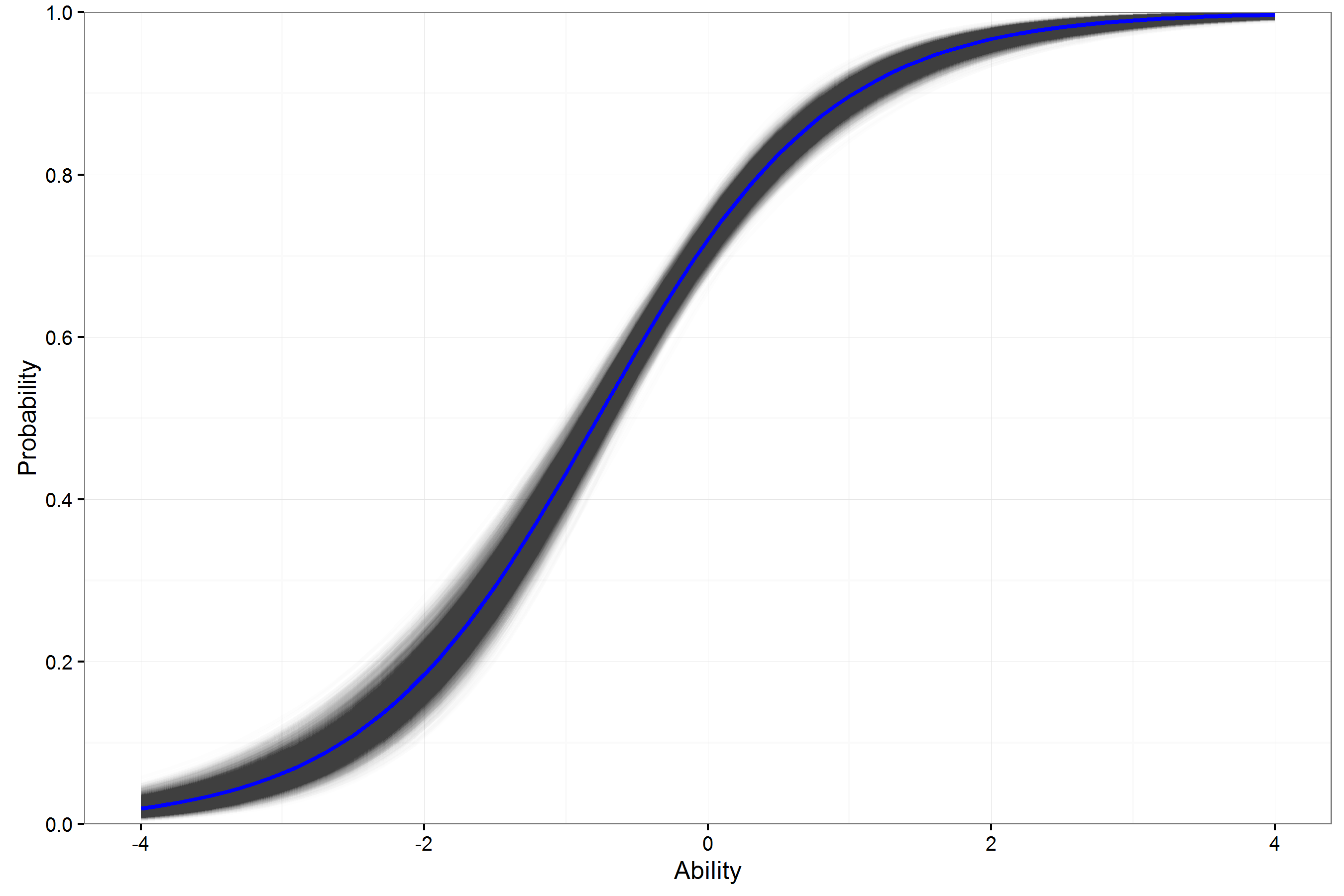
ICC Summary
- For individual items, the variation in the ICCs for a 3PL model can be large.
- This may lower usefulness of estimates in helping to select operational (best) items.
- How can these 3PL curves be expected to generalize beyond this sample with so much variability?
b and c est and SE
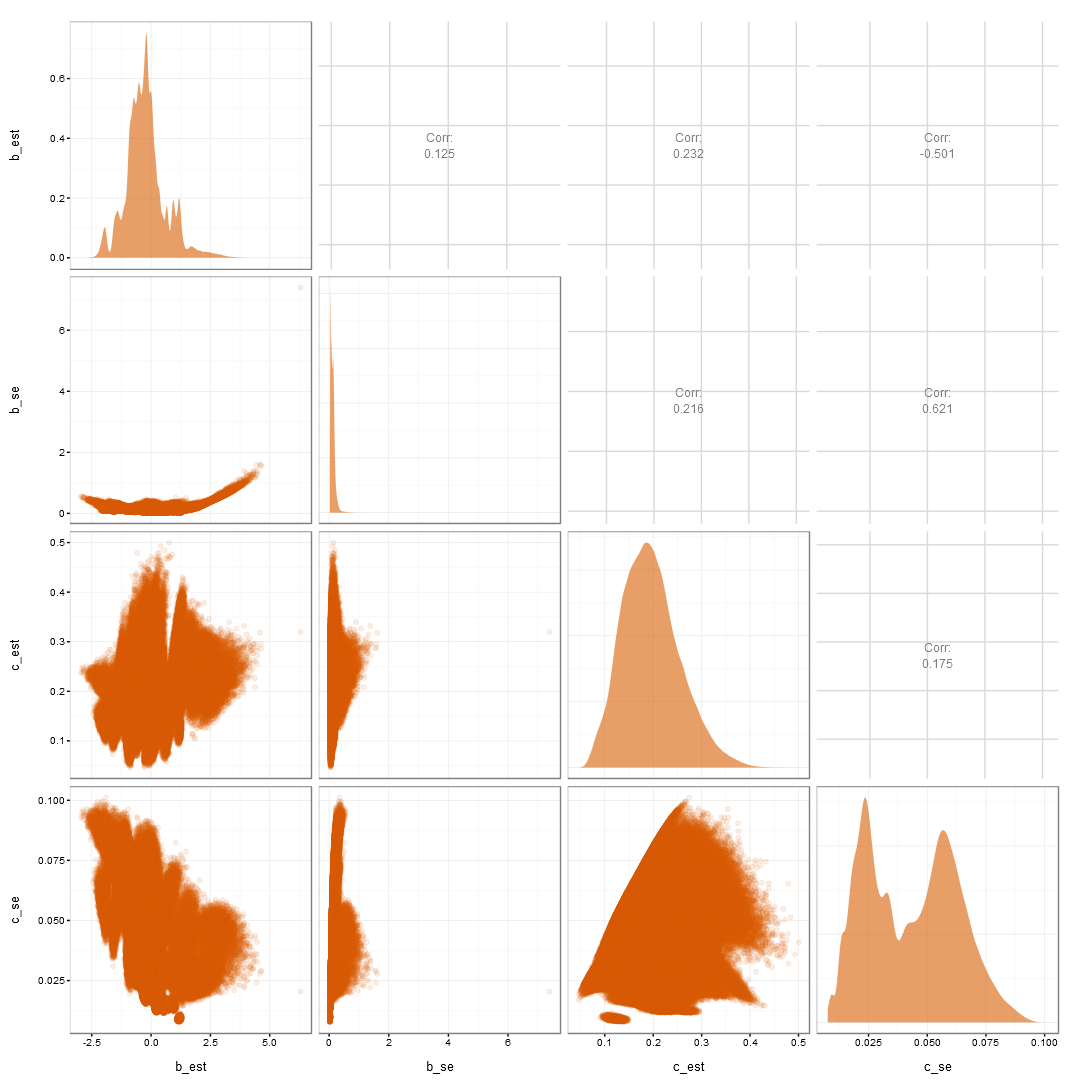
a and c est and SE
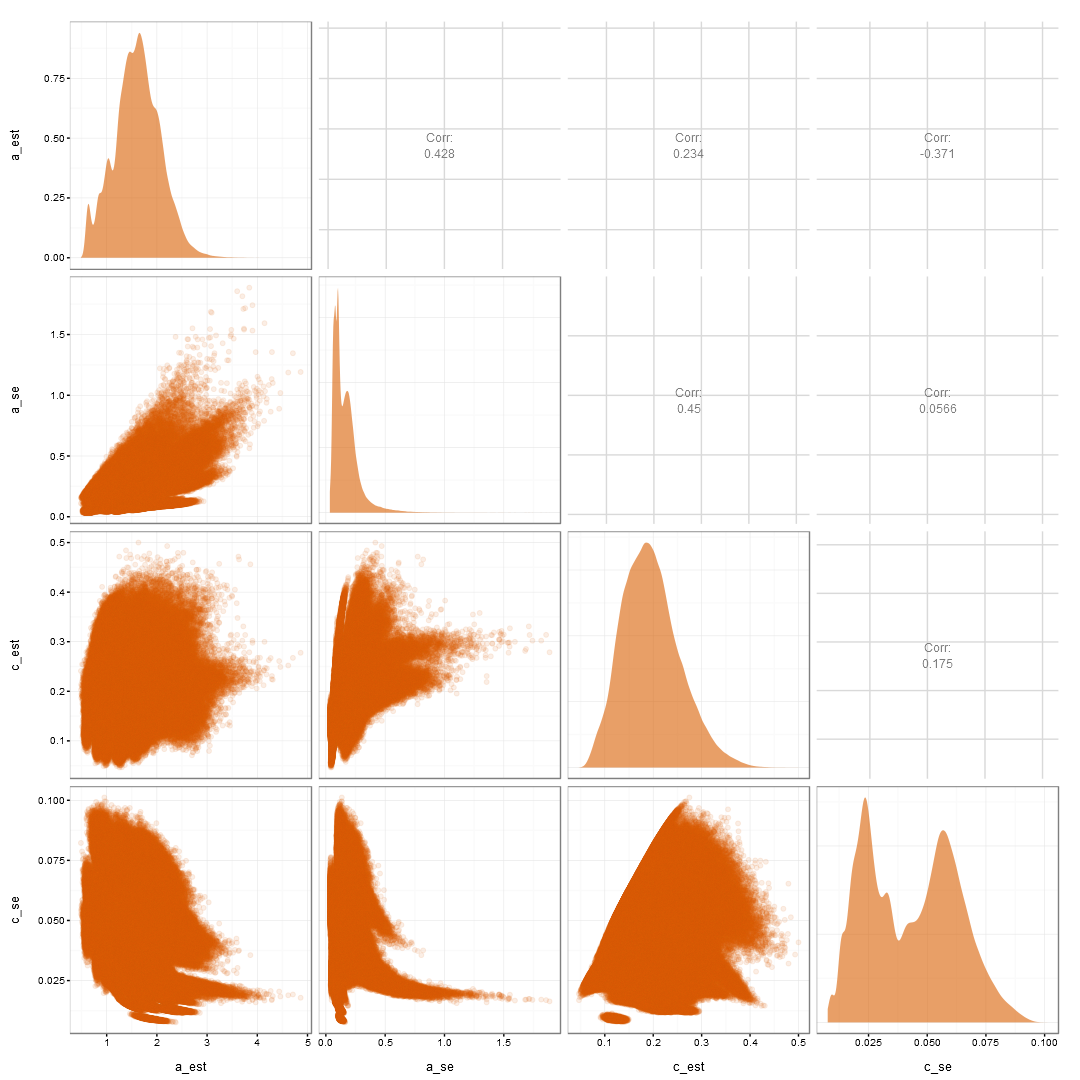
a and b est and SE
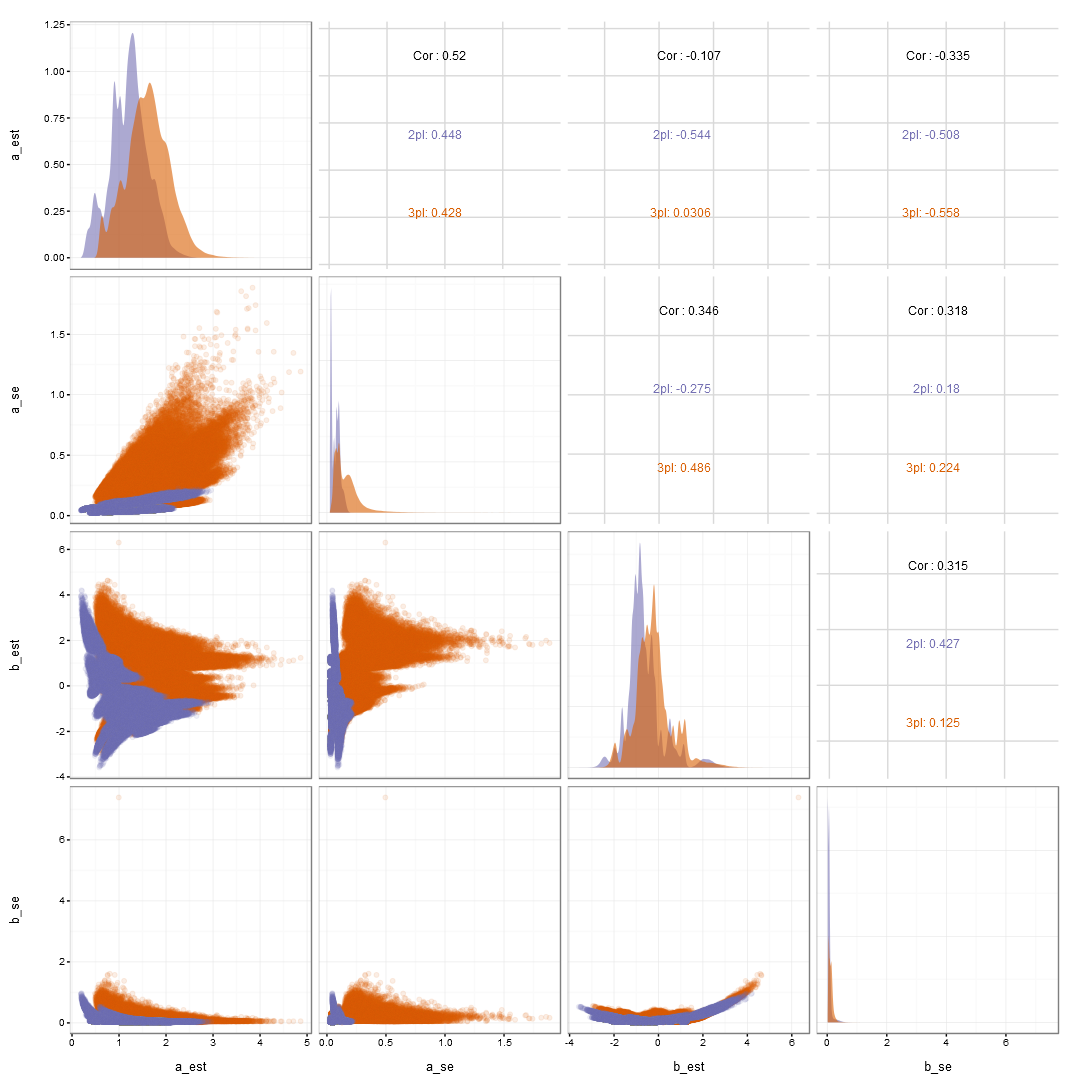
Uncertainty Summary
- The pseudo-guessing estimates are:
- negatively related to the estimates of the b and a.
- positively related to the uncertainty in the b parameter, likely the parameter of most interest.
- In turn, increasing the uncertainty in the b parameter:
- further increases the uncertainty in the a parameter.
- is also negatively related to estimates of the a parameter.
- Thus, creating the cascading vortex of problems.
Conclusions
- Item parameters estimated from FT data should not be treated as truth.
- Variation in these parameter estimates needs to be considered.
- Fit should not be the only concern when selecting an IRT model, uncertainty, generalizeability, and usefulness should also be considered.
- Estimates are much more stable when using the 2PL model.
- Thus providing a stronger foundation with which to start the validity argument for an assessment.
Questions?
- Twitter: @blebeau11
- Website: http://brandonlebeau.org
http://www2.education.uiowa.edu/directories/person?id=bleb - Slides: http://brandonlebeau.org/2016/04/09/ncme2016.html
Assessing the validity of item response theory models when calibrating field test items
Brandon LeBeau
University of Iowa